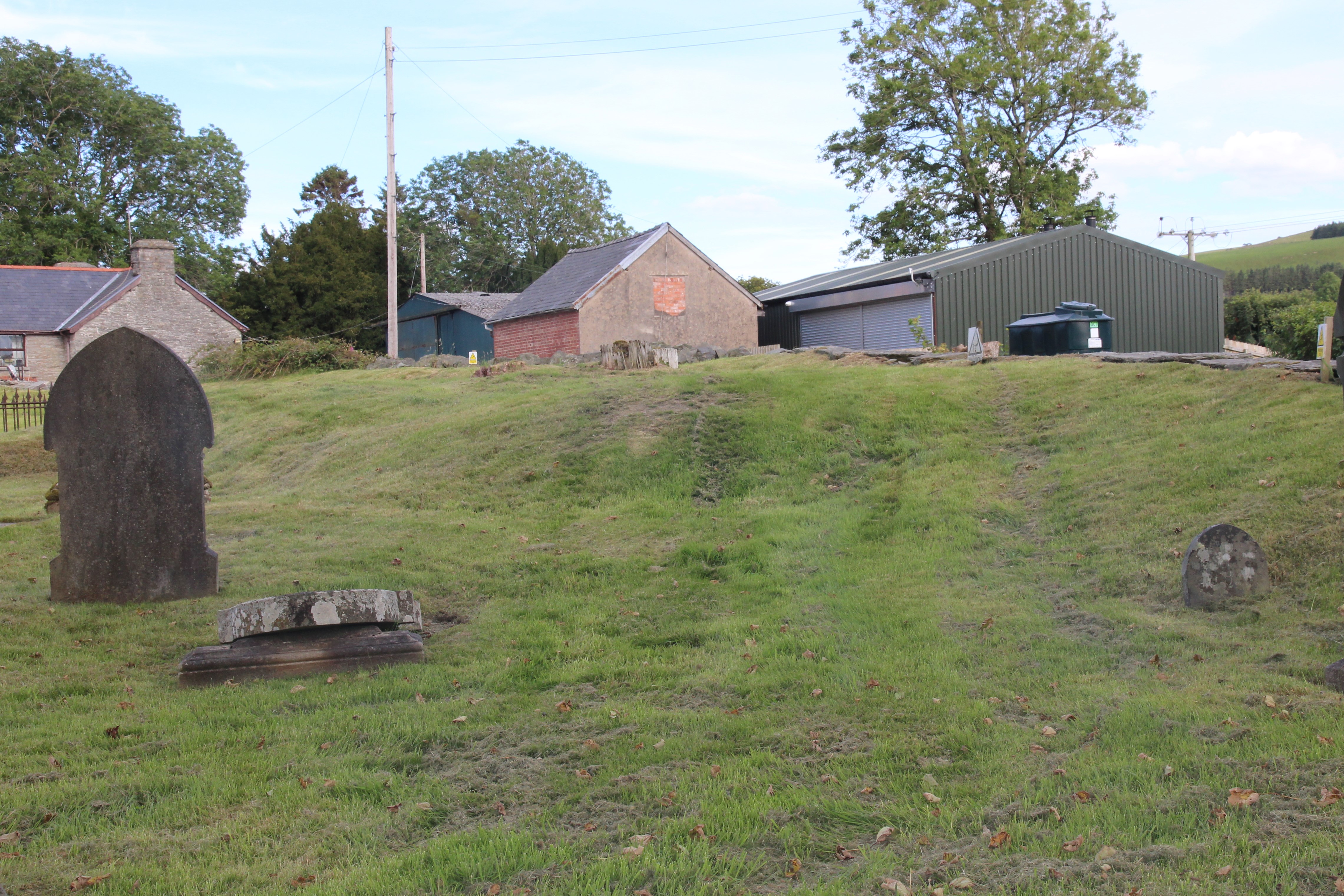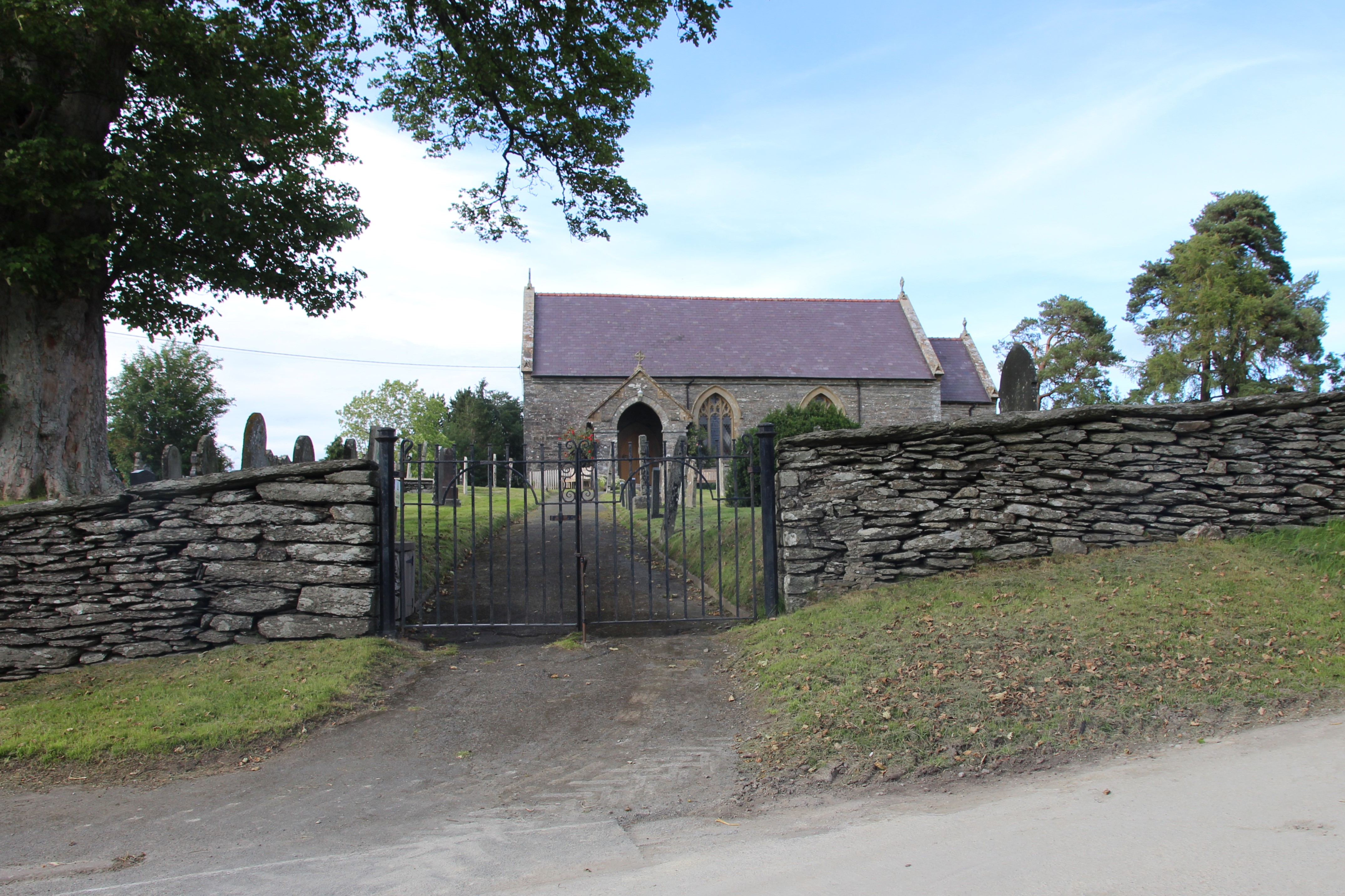As part of the Demystify the Abbey/Sacred landscapes project, a reappraisal of the boundaries of the home grange of Gollon has taken place. This has shown the grange to be more extensive than was previously thought, especially in the parish of Saint Harmon. The research has demonstrated that the St. Harmon township of Cenarth, in the north of the parish, was part of the Gollon grange. Furthermore, much of the south-western part of the parish contained the Cwmhir grange of Dolhelfa. These land holdings were part of the endowments given by the early benefactors of the abbey following its foundation in 1176.
However, it is possible that St. Harmon influenced the early choice of the Cistercians to build a monastery in Cwmhir. It has always been contended that the Cistercians only built in wild, remote and unoccupied places. More recent discoveries have cast doubt on this assertion and it is worth remembering that the landscape was always occupied previously.
St Harmon is a very old foundation, a ‘clas’ church, a monastera and the mother church of the area serving primarily Gwerthrynion. The township in which the church is situated is still known as Clasgarmon. It dates to the 6th Century AD. The Clas community was probably dissolved following the arrival of the Normans. Before that it was one of the most important churches in the area. Giraldus Cambrensis refers to St. Curigs staff (Crozier) being housed in the church. It appears in the St.David’s Episcopal registers as Glasgarmon and Sanharmon around 1500.

The site of the church bears the hallmarks of an ancient Welsh foundation. The present churchyard is circular with evidence of the ‘Llan’ around the inner perimeter, charcteristic of a pre-Christian site. Further, the church is built on a slight raise within the Llan, again indicative of an early site. The churchyard formerly contained a preaching mound in the south-west quadrant, a feature generally common to churches dedicated to St. Garmon.
![]() It is not beyond possibility that a monk or hermit from St. Garmon found his way to Cwmhir. The siting of the church at Abbey Cwmhir is in some ways straightforward and in others mysterious. Following the Dissolution, Cwmhir was without a church until John Fowler built a small chapel around 1680. This was sited on the flat land just to the south of the present church, which was provided by the Philips family in 1866. However, the churchyard contains two very large native yews, said by some experts to be in excess of 1000 years in age. Ancient yews are traditionally features of very early Christian foundations, hermitage sites and indeed, linked to pagan worship sites as well.
It is not beyond possibility that a monk or hermit from St. Garmon found his way to Cwmhir. The siting of the church at Abbey Cwmhir is in some ways straightforward and in others mysterious. Following the Dissolution, Cwmhir was without a church until John Fowler built a small chapel around 1680. This was sited on the flat land just to the south of the present church, which was provided by the Philips family in 1866. However, the churchyard contains two very large native yews, said by some experts to be in excess of 1000 years in age. Ancient yews are traditionally features of very early Christian foundations, hermitage sites and indeed, linked to pagan worship sites as well.
Could it be that the first Cistercians to arrive in the valley sensed an early Christian site and chose to build their abbey close by? Royal Commission aerial photographs have shown parch-mark evidence of medieval house platforms to the west of the present church, confirming the possibility of other settlement close by when the monks arrived. An early burial ground which is to the west of the abbey may also have been secular since the monastic burials were usually to the east of the church.
So many questions, so much to answer about this mysterious abbey!

